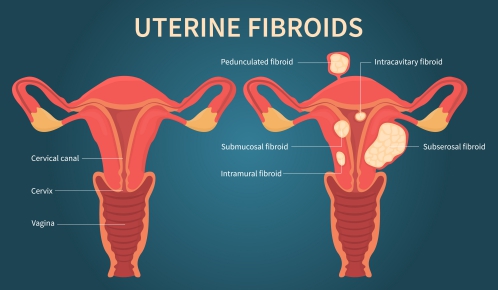What is Scurvy?
Scurvy is a condition which arises due to a deficiency in vitamin C (Ascorbic acid). The human body is unable to produce vitamin C on its own, therefore, it only depends on external sources of vitamin C, mainly from foods we consume. The body’s reserve of vitamin C can deplete in 1-3 months. Furthermore, factors including environmental or lifestyle factors (such as smoking), biological factors (inflammation or excess iron) and pathologic factors (inability to absorb in the intestines) can all affect levels of ascorbic acid in the body.
Although it is not a common condition, scurvy still occurs and can affect both adults and children who have chronic deficiency of vitamin C in their diet. Statistics have shown that in the United States, men aged between 20 to 39 years and those older than 60 years are more likely to have vitamin C deficiency compared to women of same age groups. The disease is also more common in poor countries where general malnutrition exists. It is also common in refugee camps and in populations that feed mainly on grains.
Scurvy usually presents with a variety of symptoms. The only effective way to treat scurvy is to replace vitamin C in the body. The main goal of the treatment for scurvy is to fill up the body rapidly with ascorbic acid to replenish the stores of vitamin C.
What are the causes of scurvy?

The human body is unable to produce its own vitamin C. We depend on the vitamin C that is present in our diet. This vitamin plays very important roles in our organs. Here are some functions of vitamin C:
- Protects our cells from damage
- Helps our body to produce collagen and other connective tissue proteins that are important in cartilage, teeth and bones
- Keeps our brain and nervous system healthy
- Helps our body to convert fat into energy
- Boosts our immune system
- Helps in the absorption of iron
- Required for the production of several hormones
Our body usually has a reserve of about 1500 mg of vitamin C which is present in various tissues. The reserve can be depleted in 1-3 months, if the sources of the vitamin have been eliminated from our diet. When the pool of vitamin C falls below 350 mg, scurvy occurs.
The daily requirements for vitamin C is 75 mg for women and 90 mg for men. It is mainly obtained naturally in a wide variety of fruits and vegetables. However, cooking them reduces their vitamin C content.
What are the risk factors for scurvy?
The following individuals are more at risk of having the condition:
- People with chronic malnutrition
- Elderly people, especially those eating mostly tea and toast
- Alcoholics
 People who do not eat fresh fruits or vegetables
People who do not eat fresh fruits or vegetables- Men who are widowed and live alone
- Babied fed only cow’s milk or almond milk during the first year of life
- People who smoke
- People with anorexia
- Type 1 diabetic people
What are the signs and symptoms of scurvy?
Scurvy can present with a variety of signs and symptoms. These include:
- Malaise
- Fatigue
- Loss of appetite
- Difficulty to gain weight
- Diarrhoea
- Rapid breathing
- Fever
- Irritable mood
- Pain in the legs
- Dry mouth and dry eyes
- Impaired wound healing
- Gum disease
- Loosening of the teeth
- Easy bruising
- Haemorrhage
In late stages, there may be the appearance of the following signs and symptoms:
- Jaundice
- Generalized swelling
- Decreased urine production
- Convulsions
If left untreated, scurvy can lead to potentially fatal complications such as bleeding in the brain.

How is the diagnosis of scurvy made?
To make the diagnosis of scurvy, your doctor will first start by asking you a series of questions to know more about your symptoms. He/she will then proceed with a physical examination to look for signs of scurvy. Usually, the diagnosis is made with a clear history and a thorough physical examination. In some cases, blood tests may be done to measure the level of ascorbic acid in the blood, however, this test usually reflect recent dietary intake instead of the actual levels of vitamin C in body tissues.

The best way to diagnose vitamin C deficiency is to monitor the changes and improvements following vitamin C administration. In children, radiography (X-ray) may be performed to look for any abnormal changes in the bones.
How is scurvy managed?
The main goal of the treatment for scurvy is to fill up the body rapidly with ascorbic acid to replenish the stores of vitamin C. It is essential in order to achieve complete resolution of symptoms. For an adult, about 250 mg of vitamin C is prescribed for 4 times per day for a duration of about 1 week. Your doctor knows best which dose is the most appropriate for you as well as the duration of the treatment.
Your doctor will also look for any other co-existing deficiencies such as iron deficiency anemia, folate deficiency and other vitamin deficiencies. He/she will also treat if any of the above is found. Orange juice is also an effective remedy for the treatment of infantile scurvy. The symptoms usually resolve quickly. Foods high in vitamin C include:
- Citrus fruits especially grapefruits and lemons
- Berries
- Cantaloupe
- Vegetables such as broccoli, spinach, green peppers, tomatoes, potatoes, cauliflower and cabbage
What are the complications of scurvy?
The main complications of scurvy include bleeding in several tissues of the body. This can also result inevitably into anemia, in addition to the inability to absorb iron. The haemorrhage can lead to excruciating pain depending on the area involved.

What is the prognosis for scurvy?
If the proper diagnosis is made and is followed by appropriate treatment, the prognosis for scurvy is excellent. If adequate amount of vitamin C is administered orally in daily doses, body stores are restored and the following symptoms tend to dramatically resolve:
- Bleeding stopping within the first day
- Quick resolution of muscle and bone pain
- Bleeding and sore gums getting better in 2-3 days
- Ecchymoses heal within 12 days

Source:
Goebel, L., 2017. Scurvy
World Health Organization/NHD 99.11 Scurvy and its prevention and control in major emergencies. World Health Organization.
Leger D. Scurvy: reemergence of nutritional deficiencies. Can Fam Physician. 2008 Oct. 54(10):1403-6.
Gan R, Eintracht S, Hoffer LJ. Vitamin C deficiency in a university teaching hospital. J Am Coll Nutr. 2008 Jun. 27(3):428-33.
Al-Dabagh A, Milliron BJ, Strowd L, Feldman SR. A disease of the present: scurvy in "well-nourished" patients. J Am Acad Dermatol. 2013 Nov. 69 (5):e246-7.









